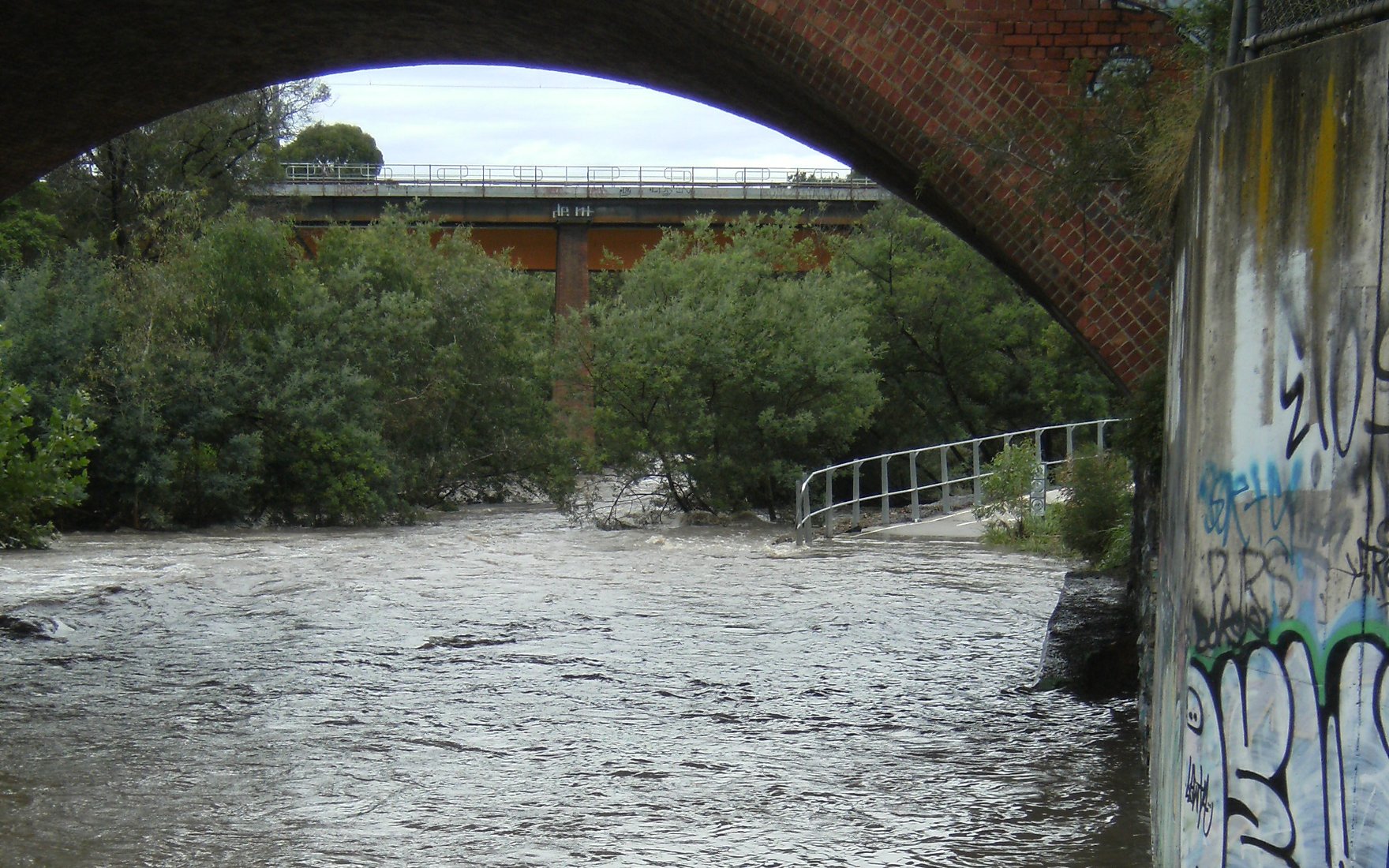Part 3: After
Now summer is coming around again. Rain is neither surprise nor burden; a clear sky is nothing more than that. Now is a time of plenty: the reservoirs aren’t full but they’re full enough; gardens grow without assistance; crops fail, or flourish, but farming in Australia has always been difficult. There is nothing unusual in this.
So, how do we live now? We commemorate our losses, on the anniversary of Black Saturday, on the anniversary of the Queensland floods; but have these two signal events come to bear the whole weight of Australia’s last fifteen years of tumultuous weather? Now that the drought, in particular, is over, nobody seems to talk about it. Perhaps I’m not listening to the right people; perhaps Melbourne has slipped too readily back into its comfortable ignorance. Yet there is here a new awareness of water, or perhaps the reawakening of an old awareness: for Australia is a country, after all, where children are taught to turn the tap off when they brush their teeth; where a generation has grown up not knowing what a sprinkler is; where a toilet without a dual-flush cistern is a relic of an almost forgotten past. Australia, the driest inhabited continent on earth, has long had a more acute, and more innate, understanding of the preciousness of water than those distant countries to which the majority of Australians trace their ancestry. Water, its swelling and its diminishment, is Australia’s culture, forged uniquely in this land.
Yet, for all our understanding of water, we’re foolish with it too. If I sometimes turn a blind eye now to my neighbour across the road hosing clean the footpath outside his house it’s only because I’ve read how high the reservoirs are; but I should be scolding him. I should be reminding him gently that water is finite, and unpredictable. Fickle. I should – we all should – be keeping in mind the next great drought to come. Whether the drought and the floods were part of a normal cycle or caused by something more sinister, it would be foolish not to expect similar disasters to occur in the future. The 2012 State of the Climate report released jointly by the Commonwealth Scientific and Industrial Research Organisation and the Bureau of Meteorology explains that in the future – the near future – we can expect the dries to be dryer, and the wets to be wetter; that when it rains it will rain harder than it has before, and that in between those times droughts are going to become more and more likely. We may already have lived through the future, or a glimpse of it; how are we responding?
Changing our way of life is hard, and frightening;
the future seems a long way away.
At the time of the Copenhagen Summit in 2009 my mother said that if the world’s leaders had met in a shed in central Australia rather than in the mild climes of Scandinavia, they might have devised with a more urgent response to climate change. Maybe. On the 14th September this year Australia elected a new government, and one of the very first things Prime Minister Tony Abbott did was abolish the Climate Commission, an independent organisation established to provide expert information on climate change to the Australian public. When Prime Minister Abbott announced his ministry there was no science minister – and the man who would have filled that role, Dennis Jensen, is an avowed sceptic of the idea of anthropogenic climate change. The Abbott Government did not send a minister to the UN’s climate change negotiations in Warsaw at the start of November; only weeks earlier, Sydney had been threatened by bushfires of a severity previously unheard of in October.
It’s more comforting to believe in the vanishingly small chance that human activity is not driving the climate towards catastrophe, than it is to believe in the extremely high chance that it is. The decision fundamentally to change our way of life is hard, and frightening; the future seems a long way away. Science speaks a language of probability rather than certainty, and to those who don’t understand that language, or who try hard not to understand it, the consequent sliver of doubt is enough to cling to.
So, how do we live now? We Australians pride ourselves on our resilience in the face of adversity: it suffuses our every national myth; it informs everything we hold dear about our national character, however misguided. We’ve lived through drought and fires and flood, not just recently but over and over and over; it’s reasonable to believe that we’ll live through them again. But as we learn to live with increasing disaster, will we recognise our country? In one-hundred years, in fifty years, in the next “drought of the century” or the next conflagration, will Australia still be a country that we want to call home?
Click here for Life in a Time of Plenty, Part I.
Click here for Life in a Time of Plenty, Part II.

